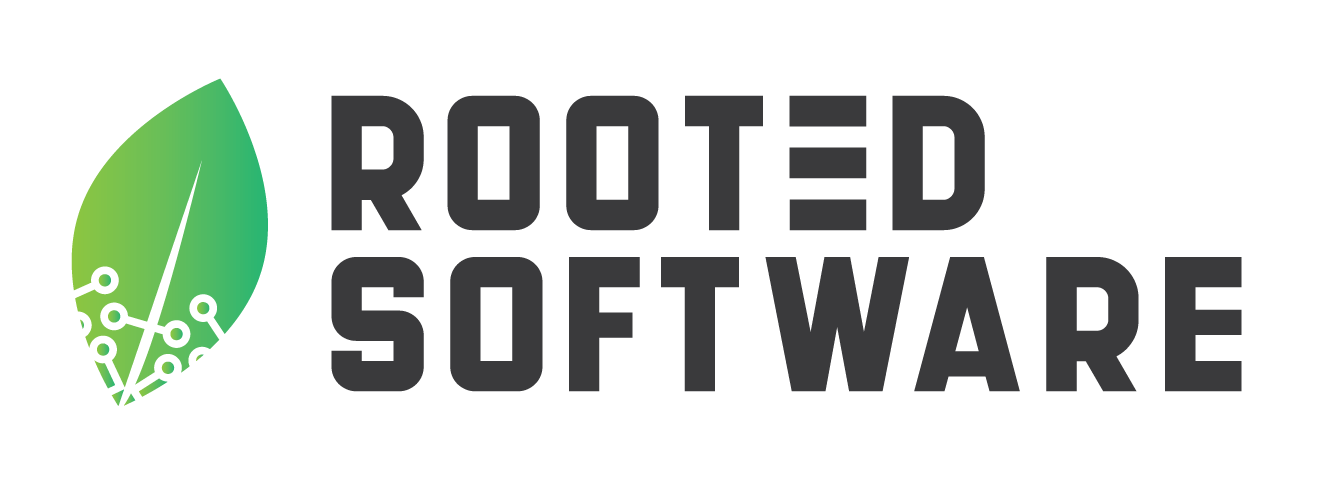Cloud Migration Challenges and How to Overcome Them
In today’s fast-paced digital world, businesses are moving to the cloud in droves. Whether it’s to support remote teams, improve scalability, or reduce reliance on outdated hardware, cloud solutions are transforming how organizations operate. However, despite the promise of cost savings, flexibility, and better performance, cloud migration isn’t always smooth sailing. Companies migrating to the cloud often encounter challenges that can delay progress, inflate budgets, or introduce security risks.
This blog will explore the most common cloud migration challenges and how you can overcome them to ensure a successful cloud migration journey.
Why Companies Are Migrating to the Cloud
The shift to cloud technology is largely driven by the need for greater agility and efficiency. Cloud environments allow businesses to scale services in real time, access new features without heavy upfront investment, and shift away from managing aging data centers. Cloud migration projects range from a simple "lift and shift" approach—moving applications as-is—to full-scale modernization that optimizes for performance and cloud-native capabilities.
Aligning your cloud migration strategy with your organization’s goals is essential. For nonprofits, that might mean improving service delivery or donor engagement. For small businesses, it could involve increasing reliability or reducing IT overhead. Whatever the case, a clear roadmap is the key to long-term success.
Many organizations try to “lift-and-shift first, figure out the rest later.” The result is confusion over responsibilities, stalled timelines, and billing surprises.
Common Cloud Migration Challenges
1. Lack of a Clear Cloud Migration Strategy
Many organizations try to “lift-and-shift first, figure out the rest later.” The result is confusion over responsibilities, stalled timelines, and billing surprises.
Action plan
Create a complete application inventory that includes dependency maps, data-flow diagrams, and notes about regulatory requirements.
Score each application’s business value (revenue impact, customer experience, or technical debt reduction) so you migrate the highest-ROI workloads first.
Perform a formal risk assessment covering downtime tolerance, security classification, and a rollback plan.
Publish a milestone-based roadmap (30, 60-, 90-day checkpoints) tied to clear KPIs so leadership and engineering stay aligned.
2. Data Migration Complexity
Petabyte-scale databases and decades-old schemas rarely travel nicely. Format mismatches, character-set issues, or burst traffic during cut-over can corrupt data or slow users to a crawl.
Winning practices
Choose the best transfer pattern: online replication for near-zero downtime or offline seeding when bandwidth is limited.
Adopt a “test–fix–retest” loop using checksums, row counts, and synthetic transactions.
Automate validation so data owners receive instant comparisons between source and target.
Schedule migrations during low-traffic windows and rehearse the cut-over until the rollback procedure is muscle memory.
3. Cloud Costs
Elastic pricing is a double-edged sword: every orphaned volume, idle load balancer, or oversized instance becomes a silent budget leak.
Cost-control toolkit
Right-size resources continuously with autoscaling groups driven by CPU, memory, and latency metrics.
Tag everything at launch (environment, owner, cost center) and enforce tag hygiene with policy engines.
Use commitment discounts (Reserved Instances or Savings Plans) once baseline usage stabilizes.
Establish a FinOps cadence—weekly anomaly alerts, monthly executive scorecards, and quarterly optimization sprints.
4. Security Risks & Compliance
The shared-responsibility model does not mean “hands off.” Misconfigured identity policies or public S3 buckets can violate HIPAA, PCI-DSS, or GDPR in minutes.
Mitigation game plan
Shift security left by running Infrastructure-as-Code through policy scanners (e.g., Open Policy Agent, TFLint) before deployment.
Encrypt data in transit (TLS 1.2+), at rest (service- or customer-managed keys), and—when needed—in memory.
Enforce least-privilege IAM with automated key rotation and just-in-time access.
Schedule independent audits and keep immutable logs for regulators.
5. Application Compatibility & Performance Issues
Monolithic or 32-bit applications may falter in containerized, microservice-oriented clouds.
Modernization paths
Re-host when you need a quick win and the app is short-lived—fast but carries technical debt forward.
Re-platform by upgrading middleware or OS versions—moderate effort with solid performance gains.
Refactor for strategic, long-term systems—high cost and complexity, but gains in scalability and DevOps agility.
Monitor success with real-user monitoring (RUM), APM agents, and SLA dashboards to catch latency regressions early.
6. Network & Connectivity Bottlenecks
An optimized codebase can’t hide a 150 ms round-trip across continents.
Performance accelerators
Design multi-region VPCs and apply global load balancing to keep traffic close to end users.
Use Direct Connect or ExpressRoute for stable, low-jitter links between on-prem data centers and the cloud.
Deploy CDNs and edge computing to cache or pre-process content near consumers.
Adopt TCP optimization and modern UDP-based protocols like QUIC (HTTP/3) for high-latency geographies.
7. Cloud Infrastructure Misalignment
Over-engineered clusters waste money; under-powered ones throttle growth.
Alignment checklist
Collect 30–90 days of CPU, memory, disk, and network metrics to profile workloads accurately.
Hold sizing workshops that include architects and budget owners to balance performance against cost.
Tier storage—hot data on SSDs, warm data on HDDs, archival data in cold storage.
Run chaos-engineering drills to confirm failover capacity meets RTO and RPO targets.
8. Organizational Change Management
Tools don’t transform culture—people do. Resistance usually stems from skill gaps, unclear benefits, or fear of job loss.
Human-first approach
Map stakeholders to identify champions, neutrals, and skeptics; tailor messaging accordingly.
Build role-based training paths—from cloud fundamentals for business teams to deep-dive certification prep for engineers.
Communicate wins early by sharing metrics such as “deployment time dropped 60%,” building momentum, and buy-in.
Recognize and reward early adopters who automate processes, write documentation, or mentor peers.
How to Ensure a Successful Cloud Migration
Build a Strong Cloud Migration Strategy
Start with a readiness assessment to understand where you are and where you want to go. Create a phased execution plan, align stakeholders, and document every step of your migration projects. This ensures everyone is on the same page.
Choose the Right Cloud Solutions & Providers
Not all cloud solutions are created equal. Evaluate providers based on their features, compliance standards, cost models, and support offerings. Avoid vendor lock-in by designing your architecture for flexibility.
Monitor and Optimize Continuously
Your work doesn’t stop after migration. Use real-time monitoring tools to track performance, watch for anomalies, and identify savings opportunities. Schedule regular audits and usage reviews to refine your cloud strategy.
Conclusion & Call to Action
Cloud migration is a powerful step toward modernizing your business, but it comes with real challenges. By addressing cloud migration challenges head-on—from data migration complexity to cloud cost management—you set yourself up for success.
Rooted Software’s Approach to Cloud Migration
At Rooted Software, we specialize in guiding small businesses and nonprofits through successful cloud migration. Our team works closely with you to build a customized plan, from assessing your current data center setup to executing a seamless migration process.
We prioritize minimal downtime, robust data security and compliance, and long-term cost savings. Post-migration, we stay involved to help monitor your cloud infrastructure and fine-tune performance. Whether it’s a simple lift and shift or a more complex modernization, we’re here to help every step of the way.
Need help navigating your cloud migration journey? Rooted Software is here for you. Whether you’re looking for managed IT services in Walnut Creek, East Bay Area, CA, or in Colorado Springs, CO, we’ve got you covered. Our experienced team also supports clients remotely from coast to coast. Reach out and contact Rooted Software today, and let us help you move forward with confidence in the cloud.
Frequently Asked Questions
Q: What is cloud computing?
A: Cloud computing means running your applications and data on powerful servers owned by someone else and accessed over the internet. You buy only the cloud services you need, like storage, databases, or machine-learning tools, and scale up or down in minutes.
Q: Why do companies decide to move to the cloud?
A: They want to innovate faster, skip big hardware bills, and let employees work anywhere. A modern cloud platform handles backups, patches, and security so teams can focus on customers instead of servers.
Q: Are there different cloud migration strategies?
A: Yes. Rehosting, replatforming, refactoring, repurchasing, retiring, and retaining are the six classic options. Picking the right migration strategy for each app keeps projects on schedule and within budget.
Q: What does “migration is the process” really mean?
A: It reminds us that migration is a journey, not a single click. Planning, testing, transferring, and tuning all matter; skip a step and you risk outages or ballooning bills.
Q: How long does the process of moving data usually take?
A: Small websites may finish in a weekend, while giant data warehouses can take weeks. Copy tools first sync data to the cloud in near real time, then switch traffic over when everything lines up.
Q: What is the difference between a public cloud and a private cloud?
A: A public cloud is shared hardware—you rent a slice and pay as you go. A private cloud is gear set aside just for your company, giving more control for sensitive data or strict rules.
Q: Can I run a mix of both in one cloud environment?
A: Yes. A hybrid model keeps certain workloads on-site or in a private cloud while new apps burst into the public cloud. This lets you modernize without scrapping proven systems.
Q: What is a managed cloud, and do I need one?
A: With a managed cloud service, experts handle backups, patches, and 24/7 monitoring. It’s great when you want cloud benefits but lack staff to babysit servers.
Q: Will my users notice downtime?
A: If you migrate in phases, keep old systems live until the final cut-over, and test rollbacks, most users never notice.
Q: How do I handle old software that isn’t cloud-friendly?
A: You might containerize it, wrap it with APIs, or keep it on-prem for now. The six migration strategies let you mix and match.
Q: What happens after everything is live?
A: Post-migration tuning matters. Review costs, update security rules, and right-size resources quarterly to keep performance high and bills low.
Q: How does Rooted Software help with migrations?
A: We assess readiness, map a phased roadmap, secure sensitive data, control cloud costs, and provide ongoing support—onsite or remote—so you get value fast.
Q: Where can I learn more or get a quote?
A: Reach out to Rooted Software. We’ll explain your options, estimate timelines, and craft a plan that fits your goals and budget.


